
Leveraging the power of event data analytics can help you deliver a successful B2B event. As an event planner, you can identify your event’s core strengths and weaknesses and use that information to plan an event that consistently achieves its goals strategically.
According to Allied Market Research, the global event industry was valued at $438.8 billion in 2023 and is projected to reach $819.1 billion by 2035, growing at an annual CAGR of 5.4% from 2024 to 2035. Most of this growth is fueled by the adoption of event data analytics in B2B event organizing. The process of utilizing event data analytics is understanding and using the relevant forms of data to your advantage.
In this blog, we will discuss the different types of data, the process of collecting relevant data, and how event data can help you, as an event organizer to push your event boundaries in this ever-changing world.
What Is Event Data Analytics?
Event Data Analytics is the process of collecting, analyzing, and synthesizing event data to enable effective decision-making and provide critical insights. It is collected from the performance of your organized event, such as event ticket sales, attendee engagement, social media conversions, sponsorships, etc. For example, if you want to get insights into the types of attendees joining your event by occupation, you can get that information from your attendees’ event registration sheet.
Analyzing this event data allows you to understand the different aspects of your event by providing valuable records of aspects that went well or didn’t go according to your expectations (or failed to reach the KPIs). You can use this information to improve your weak points and develop a strategy for future events to meet your objectives.
Moreover, you can analyze your event data in real-time to iron out any wrinkles in your event planning, as Nilpa Patel, Head of Client Success at EventNX, suggested: “As events become more dynamic and personalized, real-time data is crucial for success. Event organizers can leverage these insights to make informed decisions and enhance the overall event experience, ensuring successful and memorable outcomes.”
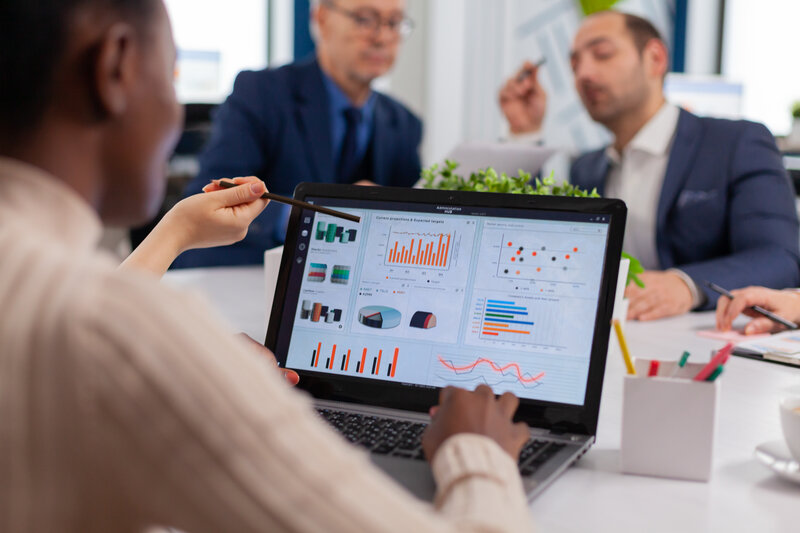
Why is Event Data Analytics Relevant?
Event planners have always faced challenges in delivering unique and engaging B2B events. Your primary weapon to combat this challenge is using event data to gain a deep understanding of your event’s performance.
As an event planner, you know your event inside out but often must be made aware of how it is performed or the attendee experience. Gaining an outsider’s or attendee’s perspective offers valuable insights for improvement.
Event data analytics provides this perspective through measurable metrics. Assuming the attendee’s viewpoint with data is adequate, your insights should be rooted in concrete data collected from various aspects of your event.
Let’s look at some of the event data features that can benefit your event planning process:
- Understanding your audience: Event data related to your attendees can provide information about attendee preferences, behaviors, activities, and demographics, thus allowing for a targeted attendee experience.
- Accurate Risk Assessment: Another feature of event data analytics is going beyond data analysis from your event. It allows you to foresee changing trends, predict new challenges, and strategize your B2B event planning process to mitigate potential risks.
- Measuring Event ROI: Event data analytics help you calculate the event’s return on investment (ROI) based on your key performance metrics. This data provides insight into your event’s strengths and weaknesses, helping you improve your weak spots.
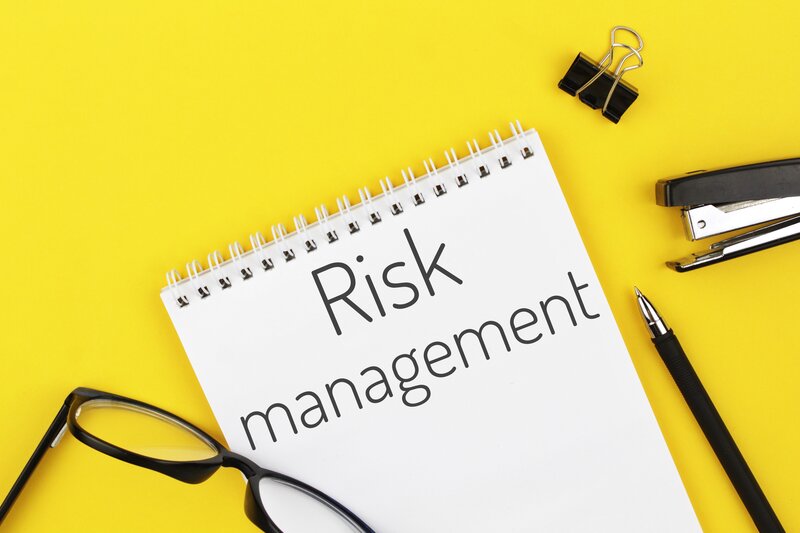
These benefits of event data analytics prove that it is a powerful tool for event organizers to create a successful B2B event. As such, it is not surprising that according to Hubspot’s The State of Marketing 2024 Report, 25% of marketers plan to adopt first-party data collection.
Now, let’s look at how to collect relevant forms of event data for a successful B2B event.
What Type Of Event Data Should Event Planners Analyze?
We have understood the relevance of event data analytics in the event planning and execution process. Now, we move forward to understand the relevant data types.
In the event planning process, you will collect lots of data. However, you must understand what data is essential and relevant to your event to enhance your decision-making. Explore some essential event data types you can analyze for your B2B event.
1. Registration and Ticketing Data
Registration data is collected during the pre-event stage, indicating how well your event performs before it takes place. It’ll tell you about your attendees’ pre-event activities by analyzing data about their mode of registration (online or on-site), payment method, activities signed up for, etc.
Moreover, you can collect landing page data from your event website using Google Analytics. It will inform you on metrics like which pages are most visited by users, their impact, and the ability to convert users into attendees by checking how many users sign up for the event. It will also determine the effectiveness of your marketing strategies.
Similarly, the number of tickets sold for your B2B event will inform you about the number of people attending. The pace at which the tickets sell and the total time it takes for the tickets to sell out will indicate your event’s popularity. The ticket volume will also give you an estimate of the revenue generated from ticket sales.
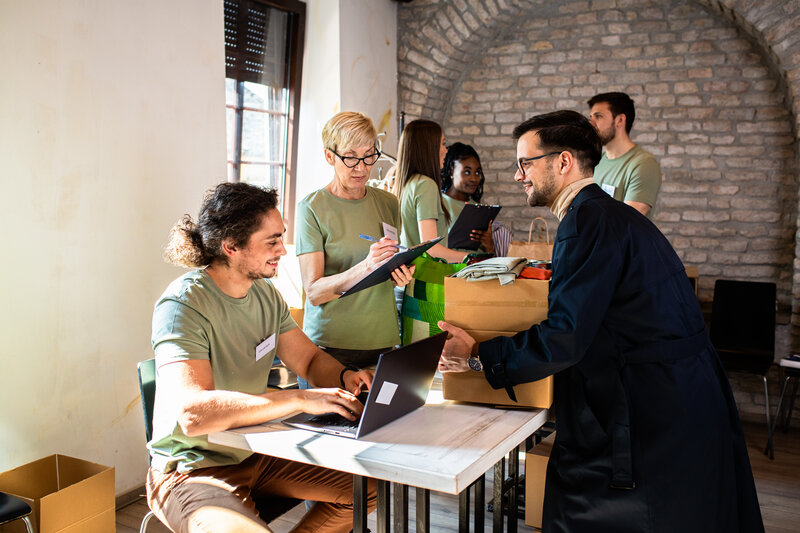
2. Attendee Data
Attendee data highlights the efficacy of your marketing efforts to attract novice audiences and your event’s potential to attract the same audience by analyzing the number of new attendees, returning attendees, and the event’s total number of attendees from the event registration sheet.
You can also collect data on attendee preference, demographics, online activity, and past engagement patterns by utilizing your social media campaigns to post opinion polls, questionnaires, and emails asking for suggestions on the event. This will make attendees who have signed up feel that they are contributing to the event and help you gain valuable insights into what attendees expect from the event.
3. Social Media Data
Social media is a vital part of your event marketing strategy. It primarily promotes your event to prospective attendees with posts, email campaigns, push texts, etc. Consequently, all these activities generate a treasure trove of data on attendees’ interactions with your marketing activities.
As a B2B event planner, it is essential to understand your attendees’ behavior, traits, inclinations, and overall demographics. How users interact with your social media posts (number of likes, comments, shares) and adopt event-related hashtags tell you how much traction your event generates. Similarly, the social media posts from your attendees after the event will also be a valuable source of information and feedback on how your event was received.
Visit this blog, “An Ultimate Guide to Understand Event Marketing on Social Media,” to learn more about how social media can enhance your event marketing efforts.

4. Engagement Data
Engagement data from marketing campaigns provides insight into how attendees interact with your efforts (social media, emails, press releases). For instance, you can track how many opened your event emails and responded, helping you understand your audience better. Social media mentions before, during, and after the event offer real-time feedback on attendees’ thoughts.
Event app data, including downloads and usage, reveals which sessions draw more interest, while attendee interactions through the app (booking slots, joining activities, etc.) offer a personal view of engagement. This data helps tailor a more personalized event experience for your attendees.
These were some of the essential event data types that every B2B event planner must collect and analyze to achieve a successful event. Next, we will explore how you can use these event data to push your event boundaries.
How Can Data Analytics Help You Push Your Event Boundaries?
You have all the relevant event data you need; now it’s time to use it to create a resilient and memorable event. The primary goal of taking up event data analytics should be to utilize this rich data to tackle the new-era challenges and remain unique in the sea of B2B events.
As such, let’s examine some effective strategies for enhancing your B2B events using event data analytics.
1. Understanding Attendee Behavior: Tracking the Digital Footprint
Using attendee data, you can design or adjust your event to better align with your attendees’ expectations. You can start by creating audience personas to track and evaluate attendee activity.
According to Kelly Sparks, CEO of VMG Studios, “An audience persona is a semi-fictional representation of your ideal attendee. It’s based on market research and real data about existing attendees. A well-developed persona can provide insights into attendee demographics, professional background, goals, challenges, content preferences, and communication habits.” She states that your understanding of how your audience will behave and interact in your event will depend on creating multiple audience personas based on different demographics, professional backgrounds, goals, etc.
Veedha Sayyaparaju, Co-Founder and CEO of Zuddl, reiterated the importance of audience personas and attendee activity at Event Marketer’s Week. She demonstrated how a company named Zylo collected specific session attendance data “for each attendee, which sessions they attend, how much they spend in those sessions, and then polls and questions asked” to better understand attendee behavior and take adequate action.
Real-time analytics allow you to make proactive decisions based on attendee behavior. For instance, if you notice high traffic or registrations for a particular speaker, you can ensure the conference room is adequately equipped. By responding to attendee behavior, you allocate resources effectively and earn goodwill from attendees, maximizing ROI.

2. Tailoring Personalized Experience with Data Insights
Personalization is critical in setting your B2B event apart from the crowd. As an event planner, you must balance focusing on uniqueness and anchoring that with your event goals and attendees’ expectations. This is evident by the report from Hubspot’s State of Marketing Report of 2024, which states that 94% of marketers agree that personalization boosts sales. Another report by Freeman suggests that 45% of event attendees are inclined toward an event with customized agenda plans.
You can utilize the attendee data again to tailor your B2B event to align with the audiences’ demands. You can use customized audience personas and attendee data to personalize opinion polls and follow-up emails for your audiences, as Veedha explains while discussing her experimentation with Zylo. They create a hyper-personalized follow-up sequence based on the event data and the attendee personas. This showcases the use of the attendee data by using the audience persona to analyze and create a personalized follow-up template.
An example of this personalized message is to conduct an opinion poll asking the attendees to select one venue from a list of venues for an automotive conference. The venue with the most votes will be chosen as the primary venue for the event.
This helps attendees feel like they are actively shaping the event and their personal opinions are being acknowledged. Moreover, you can also use the attendees’ behavior data to create a unique theme for your event that would positively resonate with the attendees, like choosing a color palette, decor, or preferred hotels.
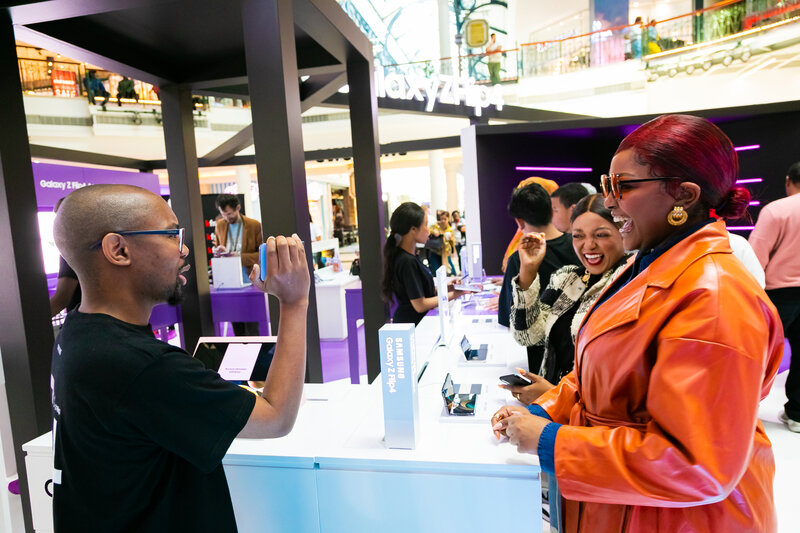
3. Forecasting and Mitigating Potential Risks
Predictive analysis (nicknamed crystal ball) is one of the essential benefits of event data analytics. It empowers you to foresee changing trends, analyze records of past events, analyze competitor events, and assess potential risks. This is enabled by an array of data sets generated from every activity related to your event, including planning strategies, budgets, marketing campaigns, and management software.
Since event data analytics tracks all your event-related activity, it creates a SWOT (Strengths, Weaknesses, Opportunities, and Threats) Analysis, which allows you to understand your event’s biggest strengths and weaknesses and possible opportunities and threats.
This information lets you improve your weak spots and design strategies to mitigate potential threats. You can also enhance your strengths to make them more unique and adjust plans to attain opportunities.
For example, with event data analytics, you find out that the food and beverage contractors won’t be able to deliver the required packages while you see an increase in ticket sales for your event. This shows both your weak spot and possible threat.
To tackle this, you can leverage your growing ticket sales to cash in more revenue to spend on alternate F&B vendors or to adjust your budget to meet the rising prices. In this way, your knowledge of possible future challenges allows you to make an informed decision that makes your event resilient.
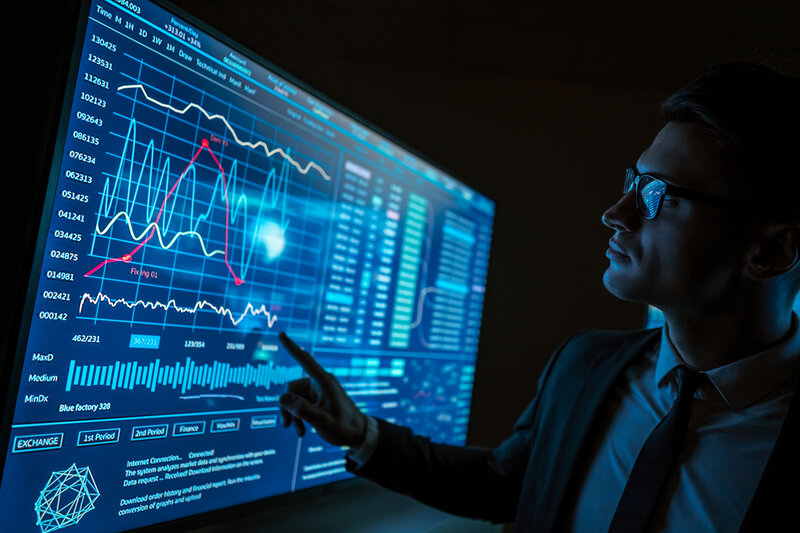
4. Optimizing Financial Costs
Another benefit of event data analytics is the ability to leverage its power of foresight to optimize your event budget and reduce unnecessary expenses. Data from ticket sales, marketing expenses, and venue and logistical costs can be analyzed to optimize your overall event finance.
The event data can be categorized into revenue and expense data sets, which can then be compared to check the feasibility and profitability of your event budget. With this information, you can efficiently allocate your resources based on the importance of event aspects.
For instance, your event data analysis indicates that your estimated budget is not adequate to cover the sudden rise in hotel bookings; in that case, you can either adjust your budget by searching for more revenue streams or find a new hotel for your guests to lodge that is both within budget and preferred by your attendees. This allows you to push your event boundaries beyond budget constraints by optimizing your finances to be flexible and looking for feasible opportunities to expand.
To learn more about event budgeting, check out our new blog, “How to Budget for Event Planning: A Comprehensive Guide for all Event Organizers.”

5. Employing Precision Marketing Strategies
The effectiveness of marketing strategies rests on converting users into attendees, and the event’s success relies on filling the conference room with attendees. Similar views are held by Tarah Warner, President & CEO of MW Productions, who says that marketing event data is key to an event’s success and goes on to imply its importance in specific scenarios: “If you have sponsors and advertisers, you need to substantiate what their return on investment is going to be in order to invest money in your event.”
Event data analytics can enhance your event marketing efforts with precision and targeted campaigns by optimizing your social media content to make it more effective. Following Nathan Meyer, Event Manager at Guidebook, suggestion, you can “Use data to identify popular sessions and underperforming content, tailoring your future events to what resonates most. You can even support underperforming content by boosting it within the app.” Thus, with the effective utilization of attendee data, you can curate personalized and targeted marketing campaigns.
A good example would be designing personalized emails for your attendees. Consider that you are organizing a product launch event for a new AI-based app, and your target audience is IT professionals, venture capitalists, and entrepreneurs. In this case, you can create an email campaign (about save-the-dates, event countdown, welcome mail, and thank you mail) that would include exciting insights and updates on the event and in AI. This would both remind your audience and pique their interest in joining the event without resorting to email spam.
For more information on effective event marketing strategies, visit our blog “A Comprehensive Guide To B2B Event Marketing”.
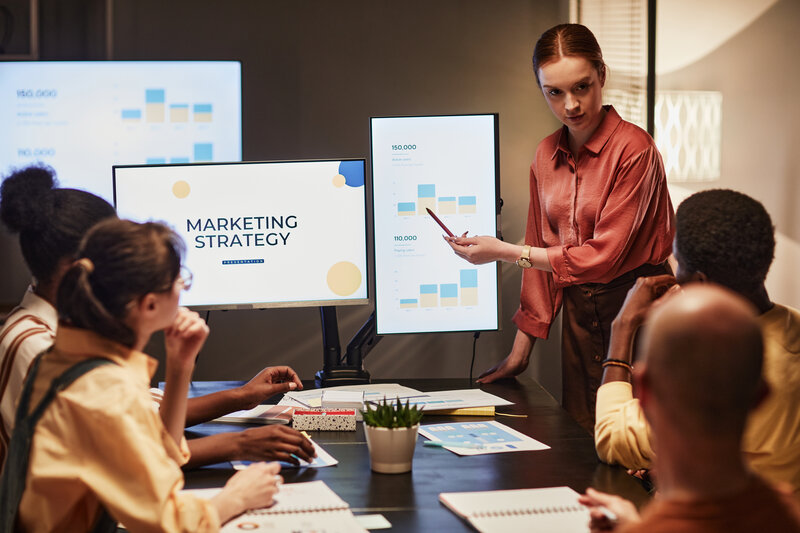
6. Enhancing Attendee Engagement
The Freeman Trends Report of 2024 indicates that 64% of attendees desire immersive experiences from the event. The more engaged and interactive your attendees are with the event, the more memorable it becomes.
As such, for an event planner, it is paramount that your event allows room for interactive activities and networking opportunities. Pushing your event to become more engaging eliminates the mundane monotony of a speaker-and-listener-type event and makes it more exciting and fun. Using event data analytics, you can analyze attendee and engagement data to make your event more engaging.
You can then follow the advice from Dhiraj Nagar, Product Manager at BentoLabs, to “Start with descriptive statistics to unravel the narrative within event data. Calculate the frequency of customer interactions, identify peak usage times, or measure response times”. With this, you can make on-the-spot changes to your event by analyzing narrative-based real-time data from attendees’ activity on the event app/website and social media.
For instance, your analysis of attendees’ past event patterns showed that they would likely give good feedback for events with interactive activities like quizzes, one-on-one sessions, Q&A sessions, live polls, etc. Similarly, you can adopt these practices to ensure that even your event can deliver an engaging experience for the attendees with a unique approach that mixes your style and the event’s objectives.
You also include learning and training opportunities for your attendees that can make the event more productive and expand their knowledge. The 2024 Freeman report highlights that 75% of attendees prefer hands-on activities and technical demonstrations at an in-person event for educational purposes.
Explore more event engagement ideas for your B2B event by reading this blog: “Everything You Need to Know About Event Engagement Ideas in 2024”.

7. Measuring Event Sucess with Event Data Analytics
Metrics and results will judge your event. Carefully analyzing your event data requires you to look at the metrics that signify your key performance areas, which include attendance numbers, engagement rates, conversions, revenue generated, and post-event surveys. All of these metrics indicate the success or failure of the crucial aspects of your event.
Data-driven insights allow event planners like you to evaluate the effectiveness of your event planning, management, and marketing efforts. With this information, you can determine your event’s financial performance and its impact (positive or negative) on the attendees.
8. Improving your Future B2B Events: The Power of Post-Event Surveys
One key data set you can analyze to make your future events stand out is records of your current and past events. The primary source of this data is post-event surveys that you can send to your attendees after the event to ask for their honest feedback and suggestions for improvement. This can enlighten you about gaps or lapses in your event organizing and help you fix those issues.
For example, suppose most of the responses from your post-event surveys show that the attendees did not like your event’s food and beverage arrangement. In that case, you can note this issue and look for alternate food and beverage vendors for future events.
Moreover, you can also use suggestions from your attendees about which F&B vendors they would like. Ensure that all the activities and data generated from your current and past events are recorded and easily accessible for analysis, saving you time and resources.
Veedha Sayyaparaju speaks about how you can gain 100% attendee follow-ups in your event surveys, even during the event. She illustrates how Zylo used session attendance data, attendee data (the events they joined, the speakers they interacted with, and their engagement with other event activities), and audience personas to create a personalized follow-up strategy by categorizing attendees into different personas and defining tasks for each session/activity they fulfilled.
So if an attendee only joined a single session on the first day of the event, they will be sent a follow-up asking if they want to join other sessions for the day or if they want highlights of the session they attended, along with the feedback surveys.
This head-on proactive strategy to track, analyze, and act on real-time event data shows you can achieve 100% attendee follow-up responses and accurate data for future events.
To learn more about the power of post-event analysis, visit our recent blog, “Essential Elements to Consider for Your Next Post-Event Analysis Report.”

The Future Of Data Analytics & Its Impact On B2B Events
Event data analytics in B2B events will continue to grow as the event industry expands and competition increases. Advancements in technology provide new data sources, enabling data-driven decisions during event planning.
Data collection and analysis are becoming more powerful with AI technologies like Machine Learning, Natural Language Processing, and Generative AI. As Fabian D. Wright, Producer at FocusXM, states, AI in event marketing is not just a tech upgrade but a transformative shift in how events are conceptualized and executed.
Event planners must embrace emerging trends, predict audience needs, and create engaging, unique experiences to succeed.
Key Takeaway
The more relevant forms of data you collect and analyze, the better decisions you can make for your B2B events. Being mindful of emerging technologies in the data analytics field can help you find more efficient methods of analyzing your event data.
One key function of event data analytics is to obtain honest attendee feedback and suggestions and analyze that data to improve your event. Eventible can help you gain important insights into your and your competitor’s events. It has many reviews from event attendees, speakers, and sponsors that are regularly quality-checked for duplicity, ensuring you, as an event planner, don’t have to worry about the validity of your event data.

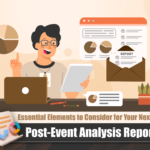
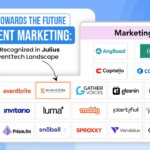

Comments are closed.